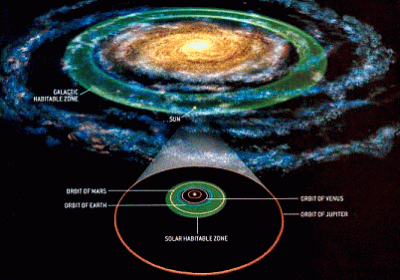
This is an older article from Astrobiology magazine, but it shows how important Jupiter is for habitability.
Excerpt:
To a biologist, the ingredients needed to form life include water, heat and organic chemicals. But some in the astrophysics and astronomy community argue that life, at least advanced life, may require an additional component: a Jupiter-sized planet in the solar neighborhood.
“A long-period Jupiter may be a prerequisite for advanced life,” said Dr. Alan Boss, a researcher in planetary formation. Boss, who works at the Carnegie Institution of Washington, is a member of the NASA Astrobiology Institute (NAI).
In our own solar system, Jupiter, with its enormous gravitational field, plays an important protective role. By deflecting comets and asteroids that might otherwise hit Earth, Jupiter has helped to create a more stable environment for life to evolve here. It’s generally believed that a massive impact was responsible 65 million years ago for wiping out dinosaurs on Earth. If not for Jupiter, it’s possible that many other such impacts would have occurred throughout Earth’s history, preventing advanced life from ever gaining a foothold.
Jupiter is significant not only for its size but also for its location in our solar system, far from the Sun. Because it orbits at slightly more than 5 AU (astronomical units the distance between the Earth and the Sun is 1 AU), there is plenty of room in the inner part of our Solar System to accommodate a range of smaller planets.
Within the inner solar system there exists a region, known as the habitable zone, where liquid water, and therefore life, can potentially exist on a planet’s surface. Without liquid water, life as we know it is not possible. The habitable zone around our Sun stretches roughly from the orbit of Venus to the orbit of Mars. Venus is generally believed to be too hot to support life. Earth, it appears, is just right. And the jury is still out on Mars.
Understanding the role that Jupiter plays in our own Solar System helps astronomers focus their search for habitable planets around other stars. “If,” Boss explains, “a Jupiter-mass planet on a stable, circular orbit [around another star at] around 4 to 5 AU was found, without any evidence for other gas giant planets with shorter period orbits, such a discovery would be like a neon light in the cosmos pointed toward that star, saying ‘Look here!’. That star would be a prime target for looking for a habitable, Earth-like planet.”
Previously, I blogged about how the circular orbit of Saturn and the mass of our star also play a role in making our planet habitable.
People who are not curious about science sort of take these blessings for granted and push away the God who is responsible for the clever life-permitting design of our habitat. In contrast, theists are curious and excited about what science tells us about the Creator. Theists care about science, but naturalists have to sort of keep experimental science at arm’s length – away from the presuppositions and assumptions that allow them to have autonomy to live life without respect, accountability and gratitude. Naturalists take refuge in the relief provided by speculative science and science fiction. They like to listen to their leaders speculate about speculative theories, and willingly buy up books by snarky speculators who think that nothing is really something (Krauss), or who think that the cosmic fine-tuning is not real (Stenger), or who think that silicon-based life is a viable scenario (Rosenberg), etc. But theists prefer actual science. Truth matters to us, and we willingly adjust our behavior to fit the scientific facts.
UPDATE: Rebuttal to me here at The Secular Outpost.


